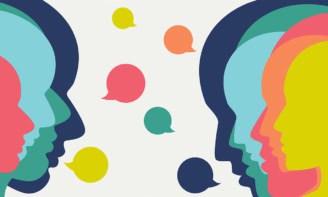Robert P Crease finds lessons for the history of science in a religious holiday celebrated this month

Passover, held this year on 22–30 April, celebrates the liberation of the Jews from slavery in Egypt. I’m an outsider to this (and any) religion, but the Passover holiday fascinates me for its storytelling. On its first or second night (usually), participants engage in a ritual known as Seder, which involves narrating the story of Exodus and then enjoying a meal. The narrative is based on a script called the Haggadah, which in Hebrew means “telling”. The Haggadah is not a sacred text but the prompt for an informal and participatory story that comes in many versions, from solemn and serious to playful and even irreverent.
The way the Haggadah presents the story has ingenious aspects that, I think, transcend any strictly religious context. These aspects even help to frame a recent controversy about the history of science.
Out of Egypt
The everyday practice of science involves much casual storytelling, from recaps at the beginning of talks and in the first paragraphs of many articles to the shortcuts colleagues give each other about why things are done this way rather than that. These informal narratives are not complete in all their details, nor do they need to be. They’re a way of reminding people of what’s important, making sure they are alert and fresh. A good history of science adopts a more comprehensive approach but can have, I think, the same ambition.
Last year, however, the Nobel-prize-winning physicist Steven Weinberg sparked a controversy about history of science. In his book To Explain the World, Weinberg wrote that he was seeking to tell “how science progressed from its past to its present” from the perspective of a “modern working scientist”. His explicit desire was to judge “the past by the standards of the present” rather than to understand the past on its own terms as historians typically do. Weinberg’s approach was like looking at the history of architecture in anticipation of today’s buildings and codes.
Several historians of science sharply criticized Weinberg’s book, and Weinberg was equally firm in answering them. His rebuttals included an article in the New York Review of Books and a talk he gave in a session about his book, which I helped organize, at this year’s March meeting of the American Physical Society. The dispute raises deep questions about the purpose of science history. Should it be primarily about how technical features of today’s science emerged? Should it focus on earlier forms of science and how these evolved? Or can history of science have some other end, such as to make its audience – scientists and non-scientists alike – alert to the practice and meaning of science?
I know it’s crude, but here’s where Seder helps frame the issues. Weinberg’s view is that the story of Exodus should be told backwards from the viewpoint of the Promised Land, where life – tweaked, perhaps – is as good as it gets. For some of his critics, the story should be told from the perspective of participants starting in Egypt onwards. Yet another possibility is that the story should be oriented neither by life in Egypt nor the Promised Land, but should serve to put us more on alert to the present, helping us see in it possibilities for what may still lie ahead. The merits of these three possibilities depend on the needs and interests of the audience.
I find Seder instructive for another reason as well. At one point, the unfolding story halts for a moment of reflection as the participants consider four questions about the meaning of the story. Being Jewish, evidently, is more than a matter of beliefs, rituals or even birth within a group whose history includes the Exodus. It means belonging to a community whose members are in danger of forgetting that story and who therefore periodically refresh their awareness of it, making that historical experience part of the current moment. Telling the story changes the tellers, aiming to enrich them by seeking to make them more humble and agile in responding to the present.
One might say, similarly, that being a scientist is less a matter of accepting a set of beliefs, using techniques and instruments, or even of having a university degree – and more about being flexible enough to re-examine the assumptions and concepts you’ve inherited in the light of experience. It’s a flexibility of mind you can nurture by exposing yourself to examples, too numerous to mention, from science history.
The critical point
Seder’s storytelling contains yet another radical element. At one point, the Haggadah stages an imagined conversation between the participants and four children who don’t get what’s happening, and it has the participants hear and respond to the children. The children misunderstand in different ways: a wise child who wants to understand the story better; a wicked child who denies its relevance; an ignorant child who doesn’t know what’s going on; and a simple and apathetic child who can’t pose questions well. However crudely, the Haggadah thus requires participants to grapple with scepticism, ignorance and indifference towards the very community whose struggles and continued existence are being celebrated.
I find this a helpful reminder of how to communicate science to often sceptical, ignorant or uninterested politicians or members of the public. Calling such people dumb, wicked, ideological and stupid, however tempting, guarantees more resistance and opposition. A powerful way of getting through to such people is through the history of science by retelling – whether formally, informally, seriously, playfully or irreverently – how and why today’s scientists do what they’re doing.



